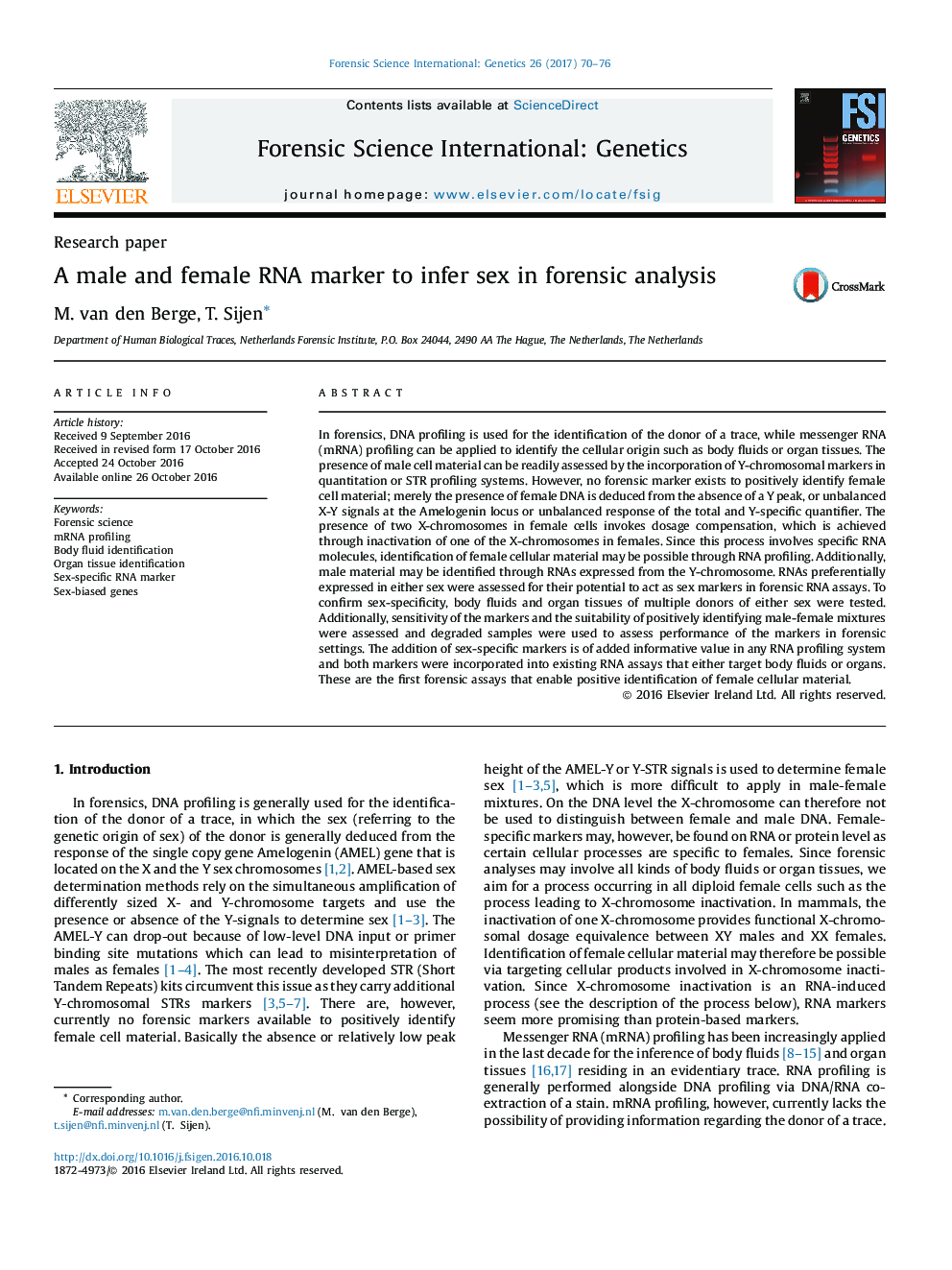| Article ID | Journal | Published Year | Pages | File Type |
|---|---|---|---|---|
| 4760406 | Forensic Science International: Genetics | 2017 | 7 Pages |
Abstract
In forensics, DNA profiling is used for the identification of the donor of a trace, while messenger RNA (mRNA) profiling can be applied to identify the cellular origin such as body fluids or organ tissues. The presence of male cell material can be readily assessed by the incorporation of Y-chromosomal markers in quantitation or STR profiling systems. However, no forensic marker exists to positively identify female cell material; merely the presence of female DNA is deduced from the absence of a Y peak, or unbalanced X-Y signals at the Amelogenin locus or unbalanced response of the total and Y-specific quantifier. The presence of two X-chromosomes in female cells invokes dosage compensation, which is achieved through inactivation of one of the X-chromosomes in females. Since this process involves specific RNA molecules, identification of female cellular material may be possible through RNA profiling. Additionally, male material may be identified through RNAs expressed from the Y-chromosome. RNAs preferentially expressed in either sex were assessed for their potential to act as sex markers in forensic RNA assays. To confirm sex-specificity, body fluids and organ tissues of multiple donors of either sex were tested. Additionally, sensitivity of the markers and the suitability of positively identifying male-female mixtures were assessed and degraded samples were used to assess performance of the markers in forensic settings. The addition of sex-specific markers is of added informative value in any RNA profiling system and both markers were incorporated into existing RNA assays that either target body fluids or organs. These are the first forensic assays that enable positive identification of female cellular material.
Related Topics
Life Sciences
Biochemistry, Genetics and Molecular Biology
Genetics
Authors
M. van den Berge, T. Sijen,
